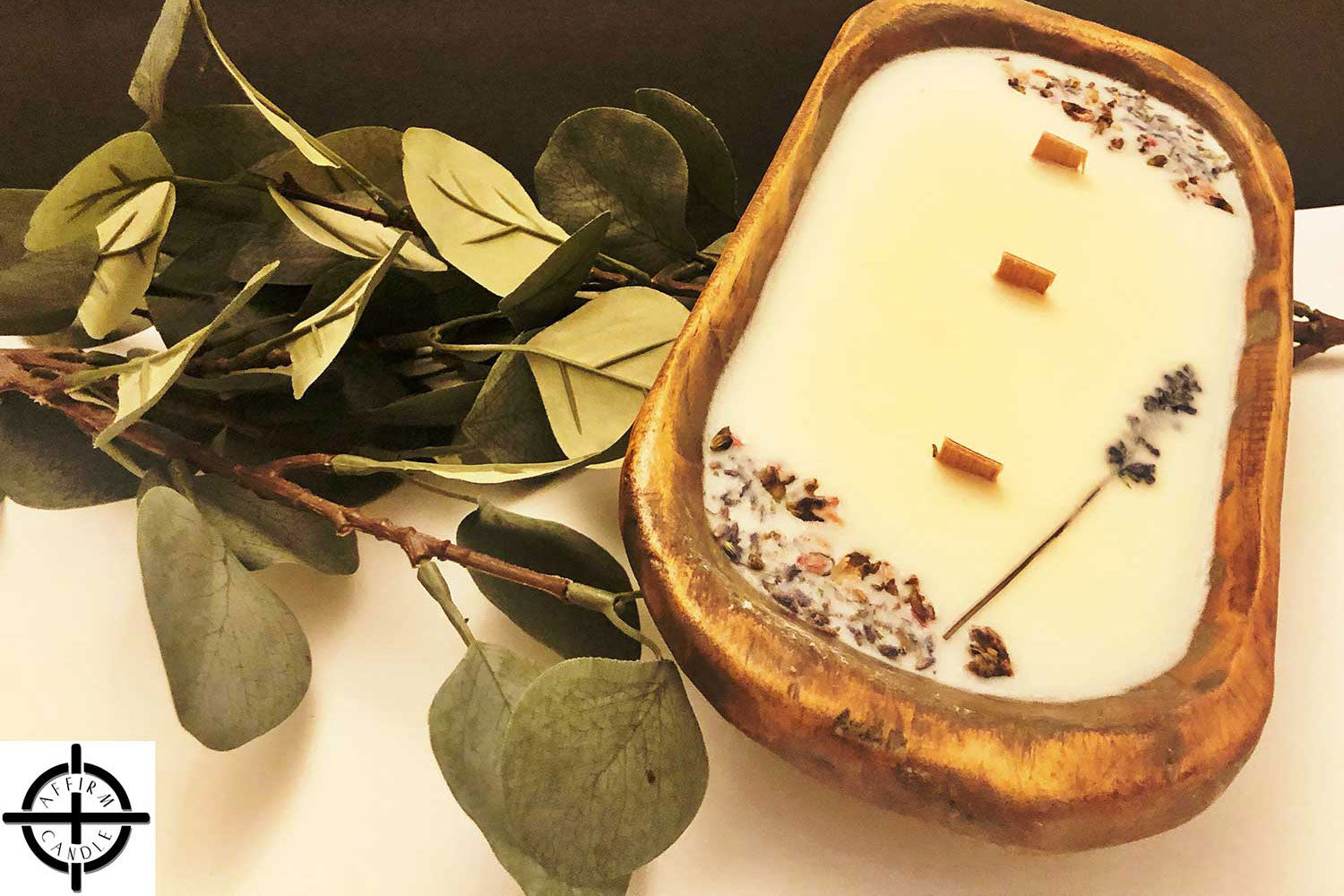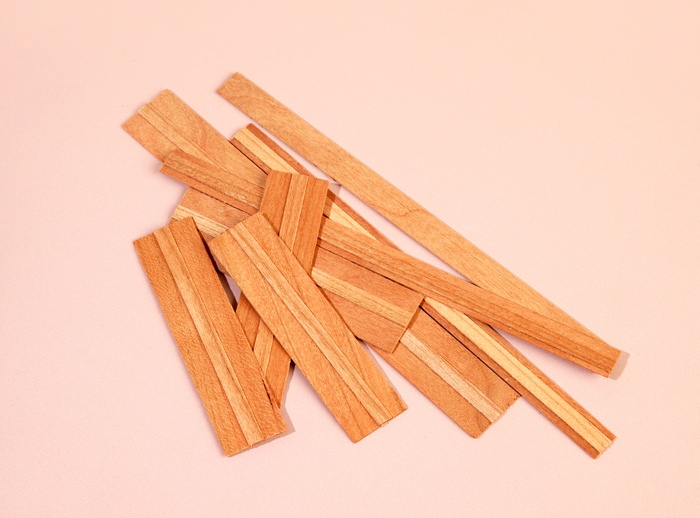Is Wick Important in Candle Making? Essential Insights

Yes, the wick is important in candle making. It controls the burn rate and influences the candle's fragrance throw.
Candle making is both an art and a science. Each component, especially the wick, plays a significant role in the overall experience. A well-chosen wick determines how evenly the candle burns and how well it releases fragrance. Different wax types and scents require specific wick sizes and materials for optimal performance.
Understanding the wick's importance can enhance your candle-making skills and ensure a satisfying result. Crafting candles at home offers a creative outlet and the joy of personalized scents. Whether for relaxation or gifting, mastering the wick can transform your candle-making journey into a fulfilling hobby.

The Essence Of Wicks In Candle Making
Wicks play a crucial role in candle making. They are not just a string. Wicks control how candles burn and release fragrance. Understanding wicks helps improve your candle-making skills.
Core Function Of Wicks
The core function of wicks is to facilitate burning. They draw up the melted wax. This process keeps the flame alive. Key factors include:
-
Fuel Source: Wicks absorb wax to feed the flame.
-
Flame Height: Wicks influence how high the flame burns.
-
Burn Rate: Wicks determine how fast the candle consumes wax.
-
Fragrance Release: Wicks impact scent throw during burning.
Wicks: The Heartbeat Of Candles
Wicks are the heartbeat of candles. They ensure a steady, even burn. Different wick types create unique effects. Here are the most common types:
|
Wick Type |
Material |
Best For |
|---|---|---|
|
Cotton |
Natural Fiber |
Most candle types |
|
Wooden |
Wood |
Rustic candles |
|
Hemp |
Natural Fiber |
Eco-friendly candles |
|
Lead-Free |
Metal Core |
High-quality candles |
Choosing the right wick matters. It affects the candle’s performance. Always consider the candle size and wax type. Experiment with different wicks for best results.

Credit: www.brambleberry.com
Types Of Candle Wicks
Candle wicks come in various types. Each type serves a unique purpose. Choosing the right wick affects the candle's burn quality and fragrance throw.
Cotton Wicks: A Classic Choice
Cotton wicks are the most common type used in candle making. They are made from braided cotton fibers. This type burns cleanly and evenly.
-
Excellent for scented candles
-
Produces minimal soot
-
Easy to work with
Cotton wicks come in different sizes. Size affects the burn rate. A larger wick burns faster, while a smaller wick burns slower.
Wooden Wicks: Crackling Ambiance
Wooden wicks add a unique touch to candles. They create a delightful crackling sound. This sound mimics a fireplace ambiance.
-
Burns slower than cotton wicks
-
Offers a different aesthetic
-
Needs careful sizing
Wooden wicks also provide a larger flame. This helps disperse scent effectively. They work well with natural waxes.
Braided Wicks: Consistency In Burning
Braided wicks offer a steady burn. Made from multiple strands of cotton, they provide durability.
-
Less likely to bend or curl
-
Ideal for larger candles
-
Available in various thicknesses
These wicks are versatile. They work well with different wax types. The braiding technique helps maintain a consistent flame.
|
Wick Type |
Advantages |
Best For |
|---|---|---|
|
Cotton Wicks |
Clean burn, easy to use |
Scented candles |
|
Wooden Wicks |
Crackling sound, larger flame |
Natural wax candles |
|
Braided Wicks |
Steady burn, durable |
Larger candles |
Choosing The Right Wick Size
Choosing the right wick size is crucial in candle making. The wick controls the candle's flame, burn rate, and overall performance. A proper wick size ensures a clean burn and maximum fragrance throw.
Matching Wick Size With Candle Width
Wick size must match the width of your candle. A wick that is too small will struggle to melt the wax. This creates a small pool of wax and leaves the candle uneven. On the other hand, a wick that is too large will burn too hot. This can cause soot and a faster burn rate.
Use this simple table to help choose the right wick size:
|
Candle Width (inches) |
Recommended Wick Size |
|---|---|
|
1.5 - 2.5 |
Small Wick |
|
2.5 - 3.5 |
Medium Wick |
|
3.5 - 4.5 |
Large Wick |
|
4.5 - 5.5 |
X-Large Wick |
Impact Of Wick Size On Burning Time
The wick size directly affects the burning time of your candle. A larger wick burns faster but uses more wax. This may lead to a shorter lifespan for the candle. Conversely, a smaller wick burns slower but may not melt all the wax.
-
Small Wick: Burns slower, longer-lasting.
-
Medium Wick: Balanced burn rate and time.
-
Large Wick: Burns faster, less wax left.
Test different wick sizes to find the best option. Consider the candle's purpose and desired burn time. Keep records of your results for future reference.

Credit: m.youtube.com
The Role Of Wicks In Scent Dispersion
Wicks play a crucial role in candle making. They help in releasing scents into the air. A well-chosen wick enhances the fragrance experience. Understanding wick selection impacts scent throw significantly.
Scent Throw And Wick Selection
Scent throw refers to how far the fragrance travels. A good wick ensures strong scent dispersion. Factors affecting scent throw include:
-
Wick Size: A larger wick burns hotter and releases more scent.
-
Wick Material: Different materials affect how well scents are dispersed.
-
Wax Type: Some waxes hold fragrances better than others.
Choosing the right wick involves testing various options. Consider the wax type and fragrance load. The right combination maximizes the scent throw.
Wicks And Essential Oil Candles
Essential oil candles require special attention. They use natural oils for fragrance. The wick must complement these oils for best results.
Key points for essential oil candles:
-
Wick Material: Cotton or wooden wicks are popular choices.
-
Wick Thickness: Thicker wicks may be necessary for more viscous oils.
-
Burn Quality: A steady burn helps release essential oils effectively.
Testing different wicks is essential. This ensures the best scent experience. A well-chosen wick enhances the overall candle quality.
Wick Coatings And Their Effects
Wick coatings play a crucial role in candle performance. They influence burn time, fragrance throw, and soot production. Understanding these coatings helps create better candles.
Paraffin-coated Wicks For A Steady Burn
Paraffin-coated wicks are popular in candle making. They offer several benefits:
-
Consistent burn: They burn evenly and steadily.
-
Low cost: These wicks are affordable and widely available.
-
Versatile: Suitable for various wax types.
However, some drawbacks exist:
-
Soot production: May create more soot than natural wicks.
-
Not eco-friendly: Made from petroleum byproducts.
Choosing paraffin-coated wicks can lead to a reliable candle experience. They are ideal for beginners.
Natural Coatings: Beeswax And Soy
Natural coatings like beeswax and soy are gaining popularity. They offer unique advantages:
|
Type |
Benefits |
Drawbacks |
|---|---|---|
|
Beeswax |
|
Can be more expensive |
|
Soy |
|
May require more maintenance |
Natural wicks provide a cleaner burn. They are great for eco-conscious candle makers.
The Science Behind Wick Burning
Understanding the science behind wick burning is crucial for candle making. The wick plays a vital role in how a candle burns. It affects the flame size, burn time, and scent throw.
Combustion Process Of Wicks
The combustion process starts with the wick absorbing wax. As the wax melts, it travels up the wick. The flame heats the wax, turning it into vapor. This vapor then ignites, producing a flame.
-
Wax Melting: Wax near the wick melts first.
-
Heat Transfer: The flame heats the surrounding wax.
-
Vaporization: Wax turns into vapor before burning.
Different wicks can change the combustion process. Factors include:
|
Wick Type |
Burn Rate |
Flame Height |
|---|---|---|
|
Cotton Wick |
Moderate |
Medium |
|
Wood Wick |
Fast |
Tall |
|
Lead Wick |
Slow |
Short |
Choosing the right wick ensures a stable and efficient burn. It impacts the overall candle experience.
Capillary Action In Candle Wicks
Capillary action is crucial for candle wicks. It allows the melted wax to move up the wick. This process keeps the flame burning steadily.
-
Wick Structure: Wicks have fibers that absorb wax.
-
Liquid Movement: Wax travels up due to capillary action.
-
Flame Sustenance: This movement keeps the flame alive.
Different wick materials affect capillary action:
|
Material |
Capillary Action Efficiency |
|---|---|
|
Cotton |
High |
|
Wood |
Moderate |
|
Paper |
Low |
Understanding capillary action helps in selecting the right wick. It enhances the candle's performance and burn quality.
Troubleshooting Common Wick Problems
Wick issues can ruin your candle experience. Understanding these problems helps create better candles. Here are solutions to the most common wick problems.
Preventing Wick Drowning
Wick drowning occurs when the wick becomes submerged in melted wax. This leads to poor burning and uneven wax consumption.
Follow these tips to prevent wick drowning:
-
Choose the Right Wick Size: Use a wick that matches your candle’s diameter.
-
Trim the Wick: Keep the wick trimmed to 1/4 inch before lighting.
-
Use the Right Wax: Some wax types hold the wick better than others.
-
Check the Fragrance Load: Too much fragrance oil can drown the wick.
|
Wick Size |
Candle Diameter |
|---|---|
|
Small |
1-2 inches |
|
Medium |
3-4 inches |
|
Large |
5 inches or more |
Solving The Mystery Of Smoking Wicks
Smoking wicks produce soot and an unpleasant smell. This can spoil your candle enjoyment.
Address smoking wicks with these strategies:
-
Trim the Wick: Shorter wicks burn cleaner.
-
Adjust the Wick Material: Cotton wicks are less likely to smoke.
-
Reduce Fragrance Oils: High fragrance loads can cause smoke.
-
Check the Draft: Avoid burning candles in windy areas.
Monitoring these factors helps maintain a clean burn.
Sustainability In Wick Selection
Choosing the right wick is essential for eco-friendly candle making. Sustainable wick options can greatly impact the environment. They help reduce waste and promote responsible sourcing. This choice matters for both makers and consumers.
Eco-friendly Wick Options
Various eco-friendly wick options exist. Here are some popular choices:
-
Wooden Wicks: Made from sustainably sourced wood, these wicks offer a natural look.
-
Organic Cotton Wicks: Free from chemicals, they burn cleanly and evenly.
-
Hemp Wicks: Durable and eco-friendly, hemp wicks add a rustic touch.
-
Bamboo Wicks: Biodegradable and stylish, bamboo wicks create a unique flame.
Each of these options has benefits. They contribute to a healthier planet. Choosing these wicks supports sustainable practices.
The Future Of Sustainable Candle Making
The candle industry is evolving towards sustainability. Many brands prioritize eco-friendly materials. Here are some trends shaping the future:
-
Recyclable Materials: More brands use recyclable containers and packaging.
-
Plant-Based Waxes: Beeswax and soy wax are becoming more popular.
-
Renewable Resources: Companies focus on sourcing from renewable sources.
-
Transparency: Brands share information about their sourcing practices.
As consumers, we can make a difference. Choosing sustainable wicks promotes a cleaner environment. Together, we can shape a brighter future for candle making.
Frequently Asked Questions
Is The Wick Crucial For Candle Making?
Yes, the wick is essential in candle making. It serves as the fuel delivery system for the candle. A proper wick ensures even burning and effective fragrance throw. Choosing the right wick type affects the candle's performance and overall quality.
Thus, it's a critical component of the process.
How Does Wick Size Affect Candle Burning?
Wick size directly impacts the candle's burn rate. A wick that is too small may not produce enough heat, leading to tunneling. Conversely, a wick that is too large can cause excessive soot and a fast burn. Choosing the correct size ensures a balanced and efficient burn.
What Materials Are Used For Wicks?
Wicks can be made from various materials, including cotton, wood, and paper. Cotton wicks are popular for their consistency and availability. Wooden wicks provide a unique crackling sound and aesthetic. Each material influences burning characteristics and fragrance diffusion, so choose wisely based on your candle type.
Can I Use Multiple Wicks In One Candle?
Yes, you can use multiple wicks in a single candle. This approach is beneficial for larger candles to ensure even burning. Using multiple wicks can enhance fragrance throw and overall performance. However, it's essential to balance their placement to avoid excessive heat and soot production.
Conclusion
Choosing the right wick is crucial for successful candle making. It affects burn time, scent throw, and overall performance. A well-selected wick enhances your candle experience, ensuring it burns evenly and safely. Invest time in understanding wick types for the best results in your candle creations.
Happy crafting!


